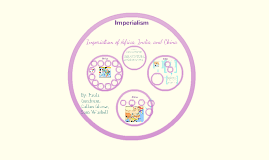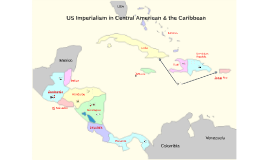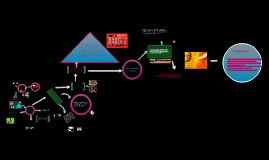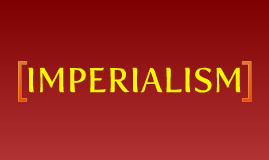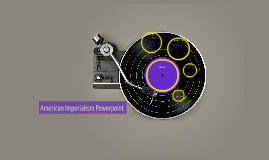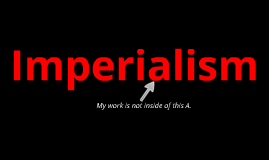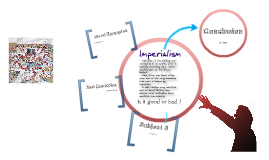Imperialism
Transcript: Social 8 Prezi by Jaxon Let's start off with Western Worldview. Differences in political, economical, and social systems during the Renaissance greatly affected the Europeans. Exploration became extremely important, and it eventually lead to the Age of Exploration. The Renaissance began mainly in Italy and the surrounding countries. Renaissance ideas and religions very quickly came to be. Martin Luther was an extremely important part of the Renaissance and the Age of Exploration. Following the Church was not enough to get into heaven, in his mind. Martin also believed that you should find your own personal religion, instead of following what others tell you to. Finally, possibly one of the most important belief of his, he thought that it was wrong to pay the Church for forgiveness. This led to other religions being formed. Humanism factualities drove some scholars to follow Luther's beliefs. People from the new Merchant class also followed his beliefs. Martin began to rebel against the Roman-Catholic church, and since they were protesting, he made a new religion called Protestant. The religions in Europe changed drastically during the Renaissance. The Roman-Catholic Church panicked and struggled to make everything more fair and reasonable. This shows an excellent example of ideas travelling across the many countries in the Renaissance. With these new religions coming to be, other people began wanting religious freedom. This lead to the formation of new countries. There are many important points on how ideas began to develop. The societies became more urban, gunpowder came from China, the printing press was invented, and a lot of exploration was going on. With all of these countries being formed, people saw themselves as citizens instead of peasants. Citizens were also now able to move out of their class, providing more freedom. Permanent armies were established soon after, paid for by taxes. The economy was also controlled by the government. National languages were invented, and religious literature was published in these languages. The trading routes were expanded so that more exotic goods could be traded. Many city-states in Italy gained power and wealth during the Renaissance because they worked on expanding their countries and settlements to the new land that was discovered. The Silk Road had always played an important part for the Europeans, but trade was very limited during the Renaissance. Islamic scientists, with help from Copernicus, proved that the Earth was spherical. There were several technological advances in cartography, ship-building, and navigation. The printing press allowed navigational maps and tables to become available for sharing. An explorer, who was also a prince, named Henry the Navigator, got many scholars to join him to perfect sailing techniques, instruments, designs for sails, maps, and a lot of new instruments. There are three main points that describe how the Age of Exploration began. One of them is the fact that each had an Atlantic coastline, which put them in an excellent position for both war and trade. Another important point is that the Monarchs of these countries financed most of the exploration overseas. The last and most important point is that there were improved ship designs, new navigational tools such as an astrolabe, and new land was found. New things started valuing exploration, which increased consumerism, and wealth of many people. Portugal found an extreme amount of wealth and trading goods during their voyage along the western coast of Africa. Spain, being jealous of Portugal's newfound wealth and power, sent it's own expeditions to the Far East. A man named Columbus sailed from Spain to an island in the Caribbean, which he thought was close to Asia. After that, he had several more trips, which eventually lead to him finding a new place unknown to Europeans. All of these countries were most focused on exploration than trading. England, didn't fund exploration; instead, they traded within Europe. When the Renaissance first started, France was busy fighting with England in a war. France wanted wealth and power as well, since they saw that Portugal and Spain found it. The Age of Exploration lead to Imperialism because countries wanted to expand to the newfound land, and also to protect them from a possible war. The expansion of these countries lead to the countries becoming very rich since they now had control over more of the new land. During another age, called the Age of Discovery, European nations found many new islands and a lot of new land that they previously did not know about. To clarify, the main reason Western European countries expanded, was to increase their wealth and power. Countries were very competitive. Europe thought that they were the leaders in everything, and they were able to tell absolutely anyone what to do. They thought that they could control all of the settlements, regardless of the religion and political views. Most of the






